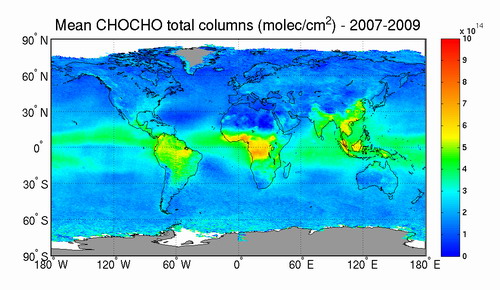|
~
|
Glyoxal vertical columns from GOME-2
Glyoxal (CHOCHO) is the smallest dicarbonyl compound and is formed in the atmosphere as an intermediate product in the oxidation of anthropogenic, pyrogenic and biogenic non-methane volatile organic compounds (NMVOCs). It is also directly emitted from fossil fuel and biofuel combustion and during fire events.
With a short lifetime, glyoxal is a
good indicator for NMVOCs emissions. A better
localization of these NMVOC sources is required because
of their important role in the tropospheric chemistry and in
particular in the ozone production.
Data available on request.

© BIRA/IASB
|



